Input interpretation

dichlorodifluoromethane
Chemical names and formulas
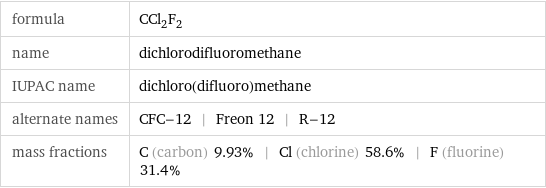
formula | CCl_2F_2 name | dichlorodifluoromethane IUPAC name | dichloro(difluoro)methane alternate names | CFC-12 | Freon 12 | R-12 mass fractions | C (carbon) 9.93% | Cl (chlorine) 58.6% | F (fluorine) 31.4%
Lewis structure
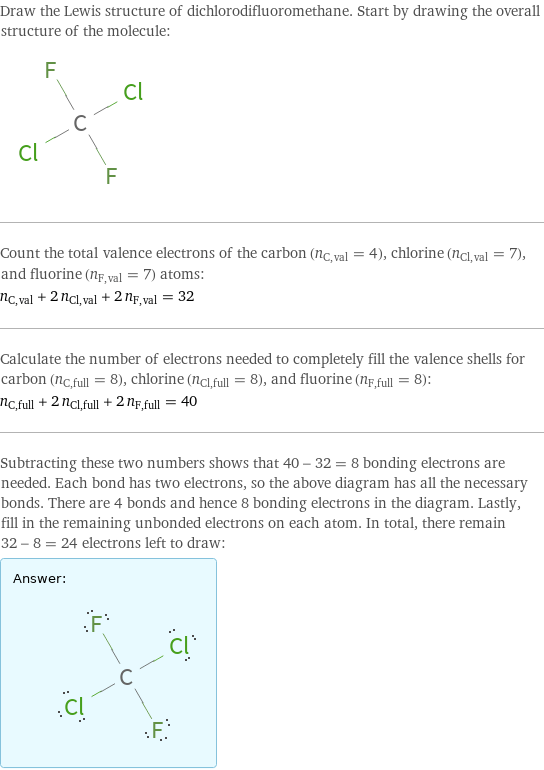
Draw the Lewis structure of dichlorodifluoromethane. Start by drawing the overall structure of the molecule: Count the total valence electrons of the carbon (n_C, val = 4), chlorine (n_Cl, val = 7), and fluorine (n_F, val = 7) atoms: n_C, val + 2 n_Cl, val + 2 n_F, val = 32 Calculate the number of electrons needed to completely fill the valence shells for carbon (n_C, full = 8), chlorine (n_Cl, full = 8), and fluorine (n_F, full = 8): n_C, full + 2 n_Cl, full + 2 n_F, full = 40 Subtracting these two numbers shows that 40 - 32 = 8 bonding electrons are needed. Each bond has two electrons, so the above diagram has all the necessary bonds. There are 4 bonds and hence 8 bonding electrons in the diagram. Lastly, fill in the remaining unbonded electrons on each atom. In total, there remain 32 - 8 = 24 electrons left to draw: Answer: | |
3D structure

3D structure
Basic properties
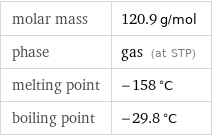
molar mass | 120.9 g/mol phase | gas (at STP) melting point | -158 °C boiling point | -29.8 °C
Units

Gas properties (at STP)

dynamic viscosity | 1.181×10^-5 Pa s (at 25 °C)
Units

Thermodynamic properties

critical temperature | 385 K critical pressure | 4.136 MPa (at STP)
Phase diagram
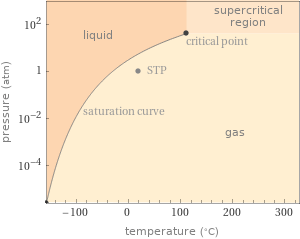
Phase diagram
Units

Chemical identifiers
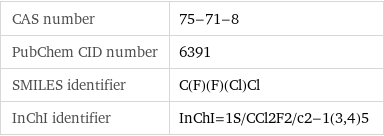
CAS number | 75-71-8 PubChem CID number | 6391 SMILES identifier | C(F)(F)(Cl)Cl InChI identifier | InChI=1S/CCl2F2/c2-1(3, 4)5
Ion equivalents

C^(4+) (carbon(IV) cation) | 1 Cl^- (chloride anion) | 2 F^- (fluoride anion) | 2